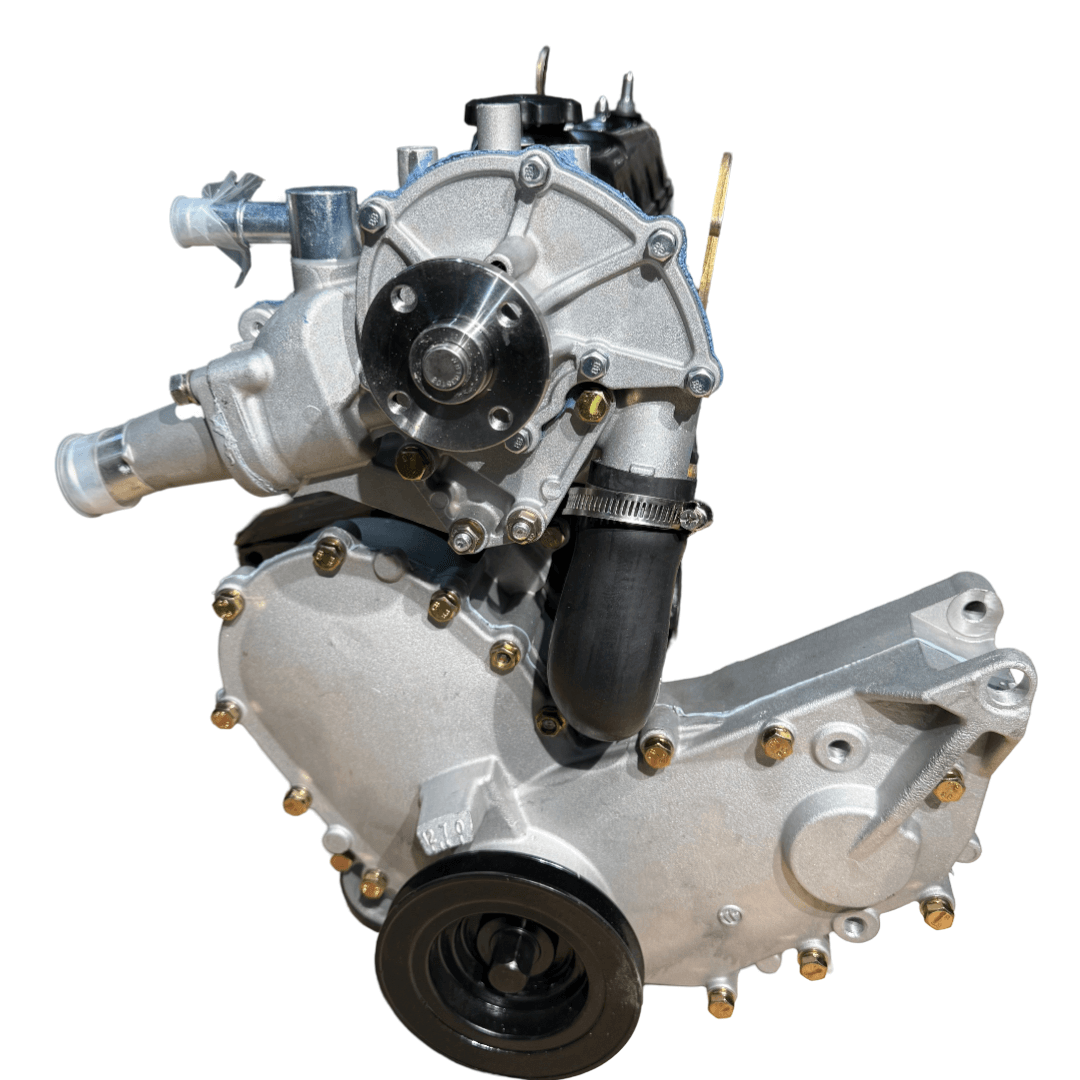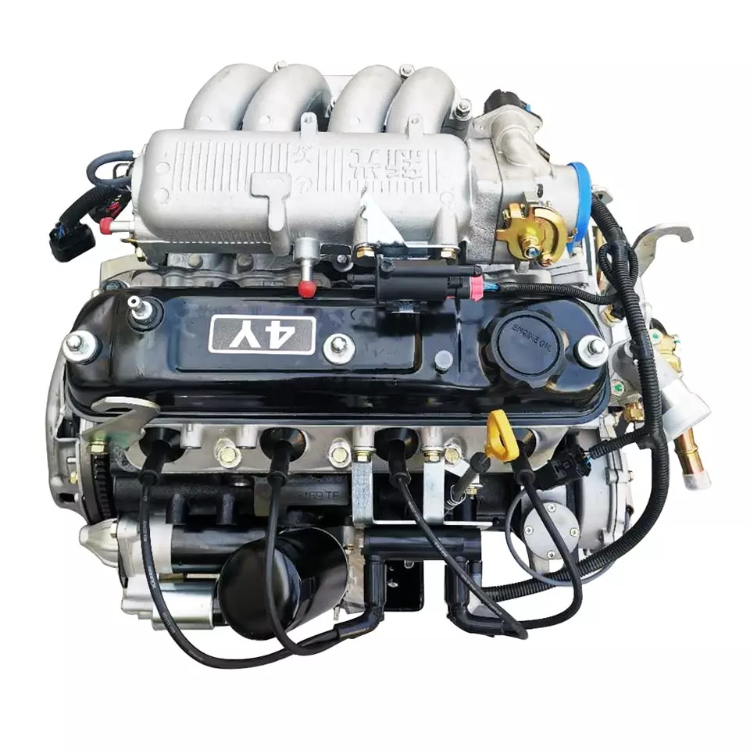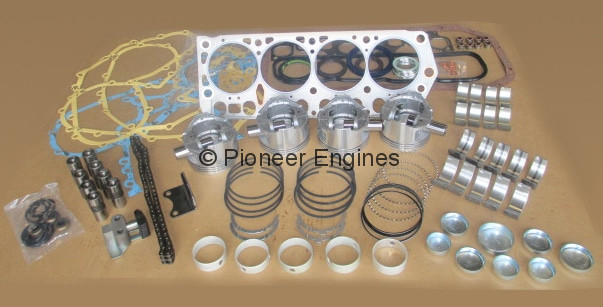How the 4Y Engine Compares to Other Engines in Terms of Fuel Efficiency
Why the Engine Is the very best Option for Performance and Efficiency in Your Automobile
The engine remains a crucial part in automotive layout, mainly because of its substantial influence on both efficiency and effectiveness. As improvements in technology make it possible for smaller engines to deliver amazing power while optimizing fuel economy, the assimilation of functions such as turbocharging and crossbreed systems ends up being progressively vital. These advancements not only boost driving experience but additionally address ecological worries. However, the inquiry arises: exactly how do these elements integrate to redefine our understanding of automobile efficiency? Exploring this balance exposes much deeper insights right into the future of engine style.
Recognizing Engine Kind
Understanding the numerous types of engines is important for maximizing efficiency and performance in auto design. The main engine kinds include interior burning engines (ICE), electrical engines, and crossbreed systems, each offering unique benefits and restrictions.
Internal combustion engines, which can be additional categorized right into gas and diesel versions, count on the burning of fuel to produce power. Gasoline engines typically offer greater RPMs and far better velocity, while diesel engines are known for their torque and gas efficiency, making them ideal for heavy-duty applications.
Electric engines, on the various other hand, use electrical motors powered by batteries or gas cells. They offer instant torque shipment, causing smooth acceleration and reduced exhausts. The effectiveness of electrical engines is considerably more than that of ICEs, making them a preferred selection for eco-conscious customers.
Hybrid systems incorporate both interior burning and electrical engines, leveraging the strengths of both innovations. They enhance fuel intake by utilizing electric power at lower speeds and changing to gas or diesel for greater rates or heavier tons.
Selecting the right engine kind is essential for attaining wanted efficiency metrics and environmental sustainability in modern automobile engineering.
The Impact of Engine Dimension
Engine size regularly plays a pivotal function in establishing an automobile's efficiency and effectiveness. Typically determined in liters or cubic centimeters, engine size directly influences the power outcome and torque qualities of a lorry. Larger engines normally generate even more horsepower, allowing better acceleration and greater full throttle. This is particularly beneficial in applications requiring durable performance, such as cars and sturdy vehicles.
Nevertheless, enhanced engine dimension frequently associates with lessened fuel effectiveness. Smaller sized engines can deliver adequate efficiency for day-to-day driving while promoting much better performance, making them a preferred option in mid-size and portable vehicles.
Additionally, improvements in engine style, such as turbocharging and direct fuel shot, enable smaller sized engines to accomplish power degrees equivalent to their bigger equivalents. This pattern highlights the significance of not exclusively focusing on engine size however additionally considering overall lorry design and innovation (4y engine). Ultimately, the impact of engine size on efficiency and effectiveness emphasizes the requirement for consumers to examine their certain driving requirements and choices when selecting a car
Advanced Engine Technologies
Innovations in engine technologies have actually considerably improved the landscape of vehicle performance and effectiveness, structure upon the fundamental ideas developed by engine size. Significantly, improvements such as turbocharging and straight gas injection have allowed smaller sized engines to supply power levels previously connected with bigger counterparts. Turbochargers compress air going into the engine, allowing for boosted power output without an equivalent boost in engine size, while direct shot maximizes gas delivery, improving burning performance.
Additionally, variable valve timing systems have arised as an important technology, enabling engines to change shutoff procedure based on driving conditions. This versatility enhances both efficiency throughout velocity and fuel efficiency during cruising. Hybrid and electric engine modern technologies further highlight the shift in vehicle style, incorporating typical interior burning engines with electrical motors to make the most of efficiency while lowering emissions.
Additionally, innovations in products science have actually caused lighter, more durable engine components, further boosting performance and durability. The combination of advanced electronic devices and engine control systems additionally enables real-time changes, making sure optimum performance across different problems. Collectively, these sophisticated engine innovations not just boost lorry efficiency but also add to a more lasting automotive future, showing the continuous evolution of engine design.
Harmonizing Power and Efficiency
Striking an equilibrium in between power and performance is essential in modern auto design as suppliers seek to meet increasingly rigorous emissions laws while pleasing customer demand for efficiency (4y engine). The challenge depends on maximizing engine characteristics to provide durable power outcome without sacrificing fuel economic situation
To accomplish this balance, engineers use different methods, such as turbocharging, which boosts engine power forcibly in more air, permitting a smaller sized engine variation that enhances fuel efficiency. Variable shutoff timing modern technologies additionally play a substantial role, allowing engines to change their performance characteristics based on driving conditions, thereby boosting both power and efficiency.
Furthermore, advancements in products and making methods have actually resulted in lighter engine components, which reduce total automobile weight and boost gas performance without endangering power. Hybrid technologies have actually additionally become a practical remedy, combining conventional inner combustion engines with electric powertrains to offer an increase in performance while maintaining lower exhausts.

Future Fads in Engine Layout

In addition, the development of advanced products, such as light-weight compounds and high-strength alloys, is set to change engine components. These materials not only minimize weight however likewise boost thermal efficiency, therefore optimizing efficiency. Furthermore, producers are discovering variable compression proportions, enabling engines to view publisher site adjust to different driving problems, enhancing both power output and fuel economic climate.
Additionally, the surge of expert system and artificial intelligence in engine style is enabling predictive maintenance and real-time performance optimization. This modern technology can bring about engines that self-adjust for optimal performance based upon driving patterns.

Conclusion
To conclude, the engine acts as a vital element in attaining optimum efficiency and performance in modern vehicles. Advanced technologies, such as turbocharging and crossbreed systems, boost power result while minimizing gas consumption and discharges. The interplay in between engine size and design remains to advance, driving technologies that balance exhilarating performance with ecological sustainability. As vehicle design proceeds, the concentrate on establishing reliable, powerful engines will continue to be critical in shaping the future of transport.
In addition, developments in engine layout, such as turbocharging and straight gas shot, enable smaller engines to accomplish power degrees comparable to their larger equivalents.Technologies in engine modern technologies have actually substantially reshaped the landscape of automobile performance and effectiveness, structure upon the foundational ideas established by engine size. Turbochargers press air going navigate here into the engine, permitting for boosted power result without a matching boost in engine size, while direct shot enhances gas shipment, enhancing burning performance.
Crossbreed and electrical engine technologies further illustrate the change in vehicle style, combining typical interior combustion engines with electric motors to optimize performance while decreasing exhausts.
Jointly, these advanced engine innovations not only enhance lorry efficiency however likewise contribute to a much more sustainable vehicle future, showing the recurring advancement of engine layout. (4y engine)